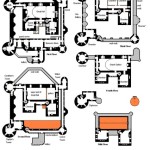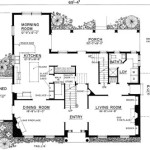Essential Aspects of Small Survival House Plans
In the face of unpredictable events, having a well-conceived survival plan is crucial. A small survival house serves as a safe haven, providing shelter, sustenance, and protection. Designing such a house requires careful consideration of various aspects to ensure its functionality and effectiveness.
Location and Site Analysis
The location of your survival house is paramount. Look for an area that offers natural protection from the elements, such as a valley or hillside. Consider access to water sources, such as a river or lake. Soil conditions should allow for gardening and drainage. Avoid flood-prone or landslide-prone areas.
Building Materials and Construction
The choice of building materials should prioritize durability, insulation, and resistance to fire and pests. Choose materials that are readily available in the area and easy to work with. Consider using natural materials such as logs, stone, or earth. Employ reliable construction techniques to ensure structural integrity.
Shelter Layout
The layout of your survival house should optimize space and functionality. Designate specific areas for sleeping, cooking, storage, and sanitation. Create a central living space that serves as a communal gathering area and a place to conserve heat. Consider incorporating multi-purpose spaces to maximize efficiency.
Water and Sanitation
Access to clean water is essential. Plan for a water filtration system to purify water from nearby sources. Consider storing rainwater or digging a well. For sanitation, consider a composting toilet or a dry well. These systems are self-contained and minimize environmental impact.
Food Production and Storage
Growing your own food ensures self-sufficiency. Dedicate a space for gardening, either raised beds or a small plot. Stock up on non-perishable food items that are easy to store and provide long-term nourishment. Consider preserving food through methods like canning or dehydrating.
Security and Safety
Your survival house should be designed with security in mind. Install sturdy doors and windows with locks. Camouflage the house by blending it into the surrounding environment. Create a defensible perimeter with barriers or natural obstacles. Plan for a communication system to stay connected in an emergency.
Heating and Energy
Maintaining a comfortable temperature is vital. Use insulation and airtight construction to minimize heat loss. Consider alternative heating sources, such as a wood-burning stove or solar panels. Explore renewable energy options to generate electricity and power appliances.
Conclusion
Designing a small survival house requires careful planning and consideration of essential aspects. By incorporating these elements into your design, you can create a secure and sustainable shelter that will provide you with the necessary protection and sustenance in the face of unforeseen challenges.

Small Survival House Design Minecraftbuilds Minecraft Houses Cute Architecture

Small Survival House Minecraft Building Ideas Plans Blueprints

30 Small Cabin Plans For The Homestead Prepper Survivalist Blog

Top 5 Simple House Designs For Survival In Minecraft

45 Best Minecraft House Ideas And Designs For 1 20 Rock Paper Shotgun

10 Minecraft House Ideas Easy And Simple Designs Fineshare

Minecraft How To Build A Simple Survival House Starter

Minecraft How To Build A Small Survival House Tutorial 5

Design Ideas For Smallest Houses In Minecraft Pocket Gamer

I Built A Simple Survival House Minecraftbuilds Minecraft Houses Plans Cute








